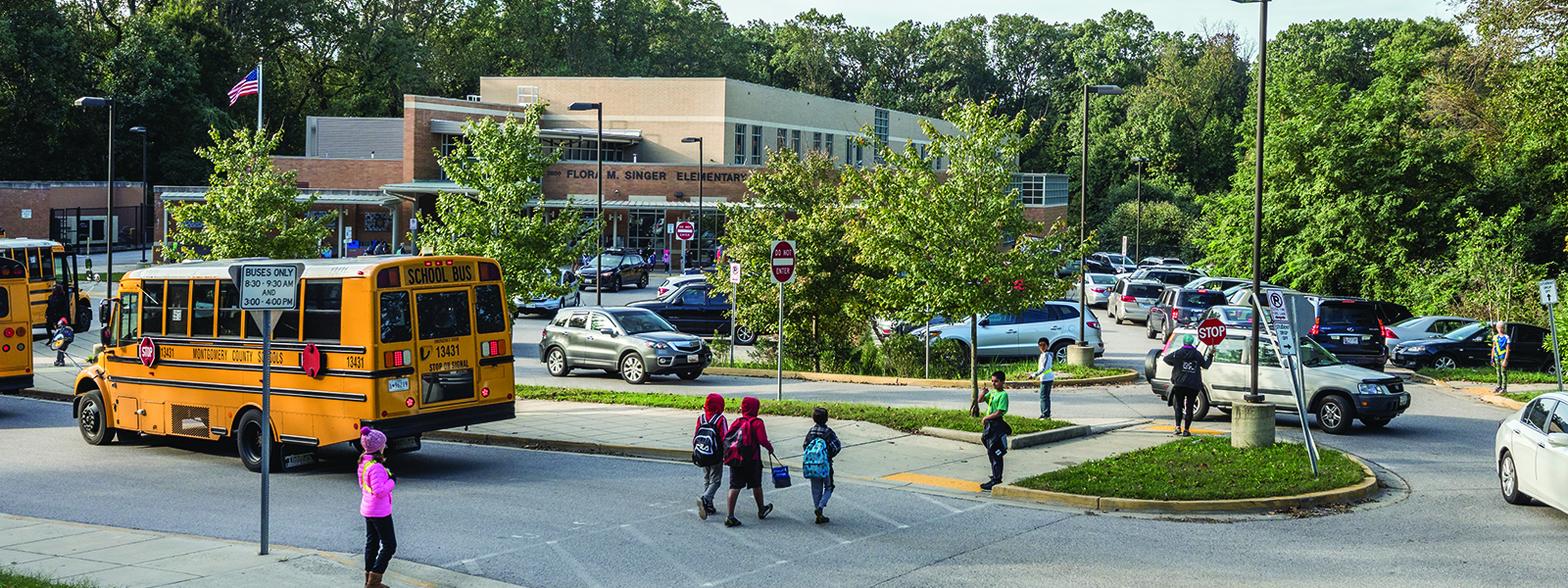Overview
School impact taxes, along with transportation impact taxes, are one of the Development Impact Taxes established by Chapter 52 of the County Code. They are assessed on new residential buildings in the county to help fund school construction projects necessary to increase public school capacity.
Development impact tax rates are updated every two years, taking effect on July 1 of each odd-numbered calendar year. School impact tax rates are recalculated by the Planning Department on behalf of the Department of Finance based on the latest school enrollment data, housing inventory data, and school construction costs. School impact taxes are calculated for four housing types in two context-based geographies called school impact areas, as described in the Council-adopted Growth and Infrastructure Policy (GIP). Montgomery Planning has no discretion in how the tax rates are calculated, but typically offers recommendations to the County Council (through the Planning Board) on the calculation as part of the quadrennial update to the GIP.
In its simplest form, the calculation is as follows:
Average # of Students per Unit x School Construction Cost per Student = Impact Tax per Unit
The average number of students per unit (also known as a student generation rate or SGR) is calculated for a given geography and unit type by Montgomery Planning using official Montgomery County Public Schools (MCPS) enrollment data to match every student to a housing type using mapping software. Note that the enrollment data is scrubbed of all personally identifiable information before being provided by MCPS.
The school construction cost per student also comes from MCPS and reflects the cost to build a new school to preferred student capacity levels (including all site work, furniture and equipment, but not the potential cost of land when that is necessary).
How are the school impact tax rates changing for FY24?
To calculate the updated school impact tax rates taking effect on July 1, 2023, Montgomery Planning used the official 2022-23 school year enrollment (a snapshot of September 30, 2022), a comprehensive Montgomery County housing dataset derived from the State Department of Assessments and Taxation property data of October 1, 2022, and average school construction costs provided by MCPS in March 2023.
The calculated rates showed a significant increase from the FY 2022-2023 rates, as seen below:
| Infill Impact Area | Turnover Impact Area | |
|---|---|---|
| Single-Family Detached Units | +45.6% | +41.3% |
| Single-Family Attached Units | +44.2% | +42.7% |
| Multi-Family Low-Rise Units | +69.0% | +57.0% |
| Multi-Family High-Rise Units | +57.8% | +129.2% |
This calculation would have made the biennial increase much higher than previous adjustment updates. As such, the County Council introduced and adopted Expedited Bill 25-23 to establish a 20% inflation cap on the impact tax rate. The adopted Bill also allows for the opportunity to recapture and carry over the dollar amount that exceeds 20% to be banked for future calculation.
Why are the raw school impact tax calculations increasing for FY24?
The graph below demonstrates the increase in each of the eight school impact tax rates and the portions of each increase that can be attributed to increased school construction costs and the change in student generation rates.
The main driver for the FY24 school impact tax calculation increases is the increase in school construction cost per student. Compared to school construction costs two years ago, the current cost to construct an elementary school is 34% higher; the cost to build a middle school is 44% higher; and the cost to build a high school is 53% higher, per MCPS.
While MCPS’ total enrollment has increased from the previous school year, it has merely rebound to the enrollment level from two years ago when impact tax rates were last calculated. However, the distribution of students living in different housing types has changed. Countywide, single-family detached and single-family attached student generation rates fell 1.3% and 0.6%, respectively. Meanwhile, the multifamily student generation rates increased 19.1% for units in low-rise structures (four stories or less) and 14.3% for units in high-rise structures (five stories or more).
As a result, the change in student generation rates is a larger contributor to the increase in school impact tax rates for multifamily units than it is for single family units. For example, 47% of the increase in the Turnover Impact Area Multifamily High-Rise impact tax rate was due to increased enrollment from those units.
